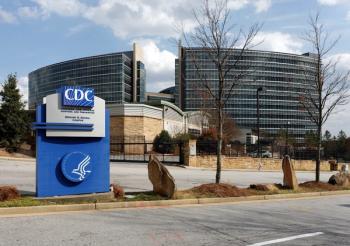
Think RPM is too big for your small practice? Think again.
Looking for ways to increase the revenues of your small practice? RPM may be the answer
Those with chronic medical conditions account for over $1 trillion annually in health care costs for services like in-hospital care, physician visits, pharmaceuticals, medical devices, and at-home care. People with chronic medical conditions, along with those suffering from diabetes and heart failure rank among the top three with the highest hospital readmission rates. Identifying illness early, often before the patient notices symptoms, allows physicians to take action to prevent further exacerbation, giving their patients greater continuity-of-care and providing their clinical staff with a reprieve from unplanned workflow complications. It also allows patients who live in rural areas with reduced access to healthcare to have more options. In the past, investing in solutions to monitor patients for early detection was reserved for large hospital systems and sophisticated care teams. Today, technology has advanced to a point where remote patient monitoring (RPM) is not only accessible to smaller healthcare groups and private practices but provides an almost immediate impact on patients and on the practice itself.
Between the start of the pandemic and June 2020, over 40% of adults in the United States delayed or avoided seeking medical care due to the risk of contracting COVID-19. By leveraging at-home options for care like RPM, physicians can encourage patients to stay engaged in their own care by managing chronic conditions, and overall health, from the comfort of their own home while staying connected to a care team.
It’s becoming clearer that RPM can significantly reduce medical health care costs and improve the quality of care in large health systems. But what kind of impact does it have in smaller and independent medical practices?
What RPM looks like in practice
We know that as patients are discharged from the hospital, they are being referred to their primary care provider (PCP), many of whom may still practice out of small or independent facilities. This situation creates an opportunity for providers to monitor those patients remotely; thus, providing a new revenue stream for patient encounters and telehealth visits with their PCP’s practice.
It also means that small practices have a tremendous opportunity to coordinate with larger health care systems within their communities. Patients are usually more comfortable following up with their PCP than being readmitted into a hospital system where the staff are unfamiliar or they are exposed to other risks, including infections or falls. Overall, partnerships with hospital systems can greatly benefit patients and practices, alike, as it reduces costs and improves the continuity of care for the patient.
By using monitoring solutions that focus on delivering remote patient care, small practice physicians can have insights into a customizable platform that allows them to:
- View patients’ data in near real-time over an extended period of time
- Track chronic conditions and response to therapies more closely
- Gain stronger insights to achieve better patient outcomes
- Gather data without the need for an in-person visit (reducing the risk of cancellations or no-shows or patient travel inconvenience)
- Support clinical decisions with data that flow directly into their already established electronic health record
- Empower patients to have more control and autonomy over their own health
Dealing with a chronic condition is life-altering, so giving agency to a patient to make their own decisions and take control of their health with the support of a care team allows them to live a more empowered life.
Lessons we can learn from the major health care players
Large health care systems generally have more resources and incentives available to them versus smaller practices. But, smaller medical practices can see a similar practical number of benefits.
While workflows vary across independent practices, we can still look to big hospital systems as innovators offering an array of best practices learned from implementing RPM across their institutions. Regardless of size, there are many ways medical practices can benefit from RPM, for instance:
- Demonstrates significant impact in reducing potentially avoidable ED utilization and reducing unnecessary hospital admissions and readmission – by keeping patients under the care of their PCP they have continuity that otherwise may not be available in a hospital setting.
- Improves work efficiencies amongst staff – from administrative staff to clinical staff, RPM can add a level of synchronization to a practice that improves communication and results in better care for the patient.
- Allocates staff time on other areas of the practice by making once manual processes, automated– like automated appointments or medication reminders – improving efficiency and lowering administrative costs.
- Harnesses the boom of telemedicine. By leveraging telehealth appointments patient cancellations and no-shows are reduced – saving critical time and resources.
- Allows the physicians to have deeper engagement with their patients during visits by explaining their physiological vital signs and parameters so that they can better educate the patient in managing their own care.
- Affords independent physicians to set various goals for reducing costs, including the number of reduced patient cancellations, labor costs, readmission costs, ER visits, and more, like increases in total per-patient revenue, total practice revenue, etc.
- Increases patient satisfaction in their healthcare experience and feel more confident making their appointments and owning their care.
Cost-saving benefits and more
Whether buying or leasing an RPM solution, the benefits remain high. If you’re looking to implement RPM at your practice for the first time, you may consider a limited pilot to optimize the process and gain staff and patient buy-in before a broader deployment. Leasing a solution lowers the upfront cost and allows the practice to immediately see the clinical and operational benefits and allow for reimbursement via the new RPM codes issued by CMS.
Building a bridge to care
With RPM becoming more popular and widely adopted across the globe, small practices can really differentiate themselves – especially in rural areas.
Going to an in-person appointment often requires taking time off work, driving to and from the appointment, or relying on someone to get you there on time. Let’s say you have a patient who lives an hour away from your office and requires a monthly follow-up appointment. That patient (and possibly a family member or other home health personnel) may have to take several hours out of their day including time off work every month to see you in person. While they know their appointment is important, they may not see the value in it if it requires them to take so much extra time out of their day.
Physicians with a high rural population can help their patients by giving them more remote treatment options – ultimately saving their patients time and money. On top of that, by using RPM with patients, practices can help reduce the likelihood of cancellations or no-shows and increase adherence to care.
Looking toward the future with RPM
Digital health is immersed in our health care experience. Regardless of whether you decide to implement a “one-stop” solution within your practice, elements of RPM are becoming commonplace, and patients and clinicians alike are seeing the benefits it offers. By meeting patients where they are versus requiring them to follow a pre-COVID process, we can start closing the gaps that so many continue face in the U.S. health care system.
Gary Manning is the Senior Vice President and General Manager, Healthcare,
Newsletter
Stay informed and empowered with Medical Economics enewsletter, delivering expert insights, financial strategies, practice management tips and technology trends — tailored for today’s physicians.















